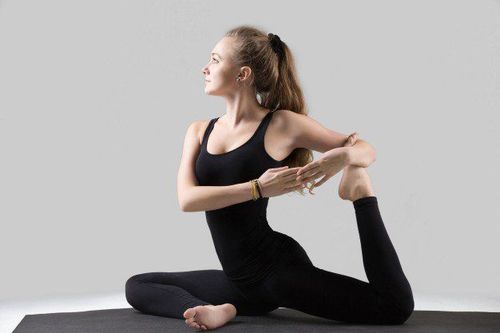This is an automatically translated article.
At some point during treatment, most people with chronic pain are told that they will have to learn to "live with their pain", and that meditation also helps them develop new skills. in order to do that. The idea is that if you can stay calm and focus your mind and body, you can control your pain and how much you feel it.
1. What is meditation?
Meditation is focusing your attention on one thing for a period of time. When you're stressed, your body triggers the release of stress hormones, which cause inflammation and increase pain in your already irritated joints. Meditation shifts your focus to something quiet and calm, which helps reduce inflammation and pain. When you can enter a quieter state of mind through meditation, your body won't release stress hormones into your bloodstream.
Meditation can help the brain release endorphins, natural pain relievers. The muscles and tissues around your joints are more relaxed and your brain may be in a calmer state, so you will feel less pain.
A study has shown that mindfulness-based stress reduction, which combines meditation and yoga, is more effective than medication and surgery for chronic low back pain. In addition to reducing the release of stress hormones, with practice, meditation can increase your pain tolerance, lower high blood pressure, and deepen breathing.
2. Does meditation lower blood pressure?
It's important to deal with your pain and muscle tension, sweating, and irritability. The idea is to relax your body and be aware of your pain without judging it or immobilizing it. The pain patient wants to run away from it, but mindfulness allows the patient to return to this dark hole, face the pain, deal with it, and control it.
Thiền giảm huyết áp đang được áp dụng ngày càng phổ biến
Meditation techniques are an increasingly popular practice that can be helpful in preventing or reducing high blood pressure. We reviewed landmark studies and recent literature regarding the use of meditation to lower blood pressure in pre- and hypertensive individuals. We sought to highlight the underlying assumptions, identify the strengths and weaknesses of the study, and suggest avenues for further research, reporting of results, and dissemination of the findings.
Meditation techniques appear to provide small but significant reductions in blood pressure as monotherapy or in combination with traditional pharmacotherapy. Transcendental meditation and mindfulness-based stress reduction can significantly reduce systolic and diastolic blood pressure. More randomized clinical trials are needed before strong recommendations for the use of meditation for high blood pressure can be made.
3. Get the focus away from the pain
You cannot experience pain unless you focus on it. Let's say you're focusing on your pain, and the next moment someone walks into the room with a gun and threatens to kill you; you will not feel any pain because you will focus on the man holding the gun. The explanatory tantra helps you shift your focus in a similar way.
Mindfulness-based stress reduction is a way of teaching meditation for chronic pain. The first thing we do is have you lie down on the floor, because for patients with pain, sitting can make things worse. For the next 45 minutes, people perform a so-called body scan that focuses on their breathing and how their body feels in the present moment from the bottom of the feet up to the feet, through the torso, and up to the head. Mindfulness-based stress reduction has helped fibromyalgia patients in a number of ways, including coping with pain, anxiety, and depression. A three-year follow-up found that patients who continued to use some form of mindfulness meditation continued to see benefits.
4. How do I start meditating?
Sit comfortably or lie down in a quiet place with little interruption. Close your eyes and focus on your breath.
Breathe normally and notice your breathing as your chest expands and contracts. As you breathe more deeply, focus your mind on releasing the tension in your body as you exhale slowly.
Start by meditating for just five minutes. You can use a kitchen timer or a timer on your smartphone or watch. Meditate a few times a week to start, 15 or 20 minutes maximum. During practice, when you notice your thoughts start to wander, turn your attention back to your breathing.
Meditation is a practice where your body and mind experience benefits even when you feel as though you are not meditating well. There is no perfection to be achieved, just the practice of awareness and being present. Thoughts that come and go are normal. Observe the thought, without judging or participating in it, and return to your breathing.
Please dial HOTLINE for more information or register for an appointment HERE. Download MyVinmec app to make appointments faster and to manage your bookings easily.
Reference source: health.com












